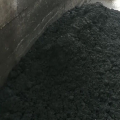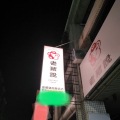|
|

樓主 |
發表於 2013-10-27 09:54:23
|
顯示全部樓層
本帖最後由 蘇少儀 於 2013-10-26 20:01 編輯
Potential for Gossypol Toxicity When Feeding Whole Cottonseed
--------------------------------------------------------------------------------
Matt Poore
Glenn M. Rogers, DVM
--------------------------------------------------------------------------------
Because production of cotton in North Carolina has increased, use of cottonseed by beef cattle producers has also increased rapidly. Many other producers are considering using it, but concern about the toxin gossypol is keeping some producers from feeding it. Gossypol is a natural toxin present in the cotton plant that protects it from insect damage. "Glandless" varieties of cotton have been developed which have very low levels of gossypol. Unfortunately, these varieties need high levels of insecticides to yield well. Most varieties grown in North Carolina, and throughout the US, will contain substantial levels of gossypol. Recent analysis of gossypol levels in North Carolina indicate level of 0.8% of whole seed, slightly higher than the national average.
Non-ruminant animals such as poultry and swine can't handle much gossypol before toxicity signs develop. This is why cottonseed meal can't be used at high levels in rations for those animals. Cattle have the ability to detoxify gossypol because the microorganisms in the rumen bind it so it can't be absorbed. This ability can be overcome at very high levels of cottonseed feeding, but cattle will not normally be affected at recommended feeding levels.
Toxicity causes primarily heart damage, and deaths due to heart failure have been reported. Most cases, however, have usually been when cattle have been allowed to consume a lot of seed over a long period of time. Dairymen feeding a large group of cows ammoniated cottonseed along with other separate ingredients in the 1980's lost cows because some cows preferred the seed over the other ingredients and ate 10-15 lbs/day rather than the average of 7 lbs. This problem has largely been solved by using the cottonseed in total mixed rations rather than feeding it separately.
Toxicity has also been reported in young calves fed several pounds of cottonseed per day. It is not recommended that calves be fed cottonseed before they have a well developed rumen. These problems have been seen primarily in early weaned calves. Young calves will not eat enough cottonseed to present a problem when lactating cows are supplemented with the recommended level.
In normal feeding situations, the amount of cottonseed that can be fed is about 0.5% of body weight for mature cows and .33% of body weight for weaned calves. This would be about 5 lbs/day for a mature cow and 1.5 lbs/day for a weaned calf. The amount used is limited both because of the gossypol and the fat content of the cottonseed. If this level is exceeded cattle may scour because of the high level of fat. Gossypol toxicity problems have not been reported in any of the studies with cattle carefully fed the recommended levels.
Care should be made to insure that the individual cattle don't exceed the recommended level of intake. If it looks like some of the cows don't like the seed, cut the level back accordingly. If the cow herd has never been fed seed before, all may not go on it at first, so start with a low amount mixed with some grain or dried molasses for a week or so before pushing cows to the maximum level of cottonseed alone. This will ensure that the cows that figure out what to do with the seed first don't over eat. Make sure the seed is spread out enough so all the cows can have access to it. It can be fed off sod or poured out on top of hay, or fed in a feed bunk, as long as it is spread out enough so that all cows can eat at the same time.
Gossypol can cause a temporary reduction in sperm cell formation in bulls when fed above the recommended level. Some research has indicated fertility problems, but some experiments have not been able to show any problems. Because of the importance of bull fertility to profitable beef production, and the small potential savings realized from feeding cottonseed to bulls, we recommend that breeding bulls not be fed cottonseed before the start of the breeding season. A fertility problem would take several months to develop, so feeding cottonseed to the cow herd during the breeding season should not be any problem. Again, observe the bull to make sure that he is not eating a large amount of seed.
All things considered, whole cottonseed makes an excellent supplemental feed for beef cattle. If fed properly such that no animals consume an excessive amount it should not cause any problems. If, on the other hand, it is fed in a careless manner it could cause trouble. The old adage "there is no free lunch" certainly applies to whole cottonseed. Producers can save money on their winter feed bill by using cottonseed, but the level of management will be slightly higher than traditional supplements. |
|


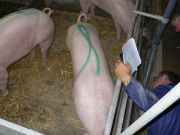
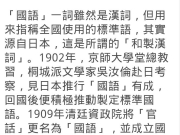
![越南非洲豬瘟疫苗蒙陰影 上百豬隻接種後死亡[轉貼]](data/attachment/block/3e/3e723490e252eebc3bc1a403febd226e.jpg)
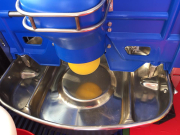
![[轉貼]從上市9頭到14頭 -- 我的養豬專業養成之路。](data/attachment/block/3c/3c17fd6b5c1b8cff34fdc7342238e082.jpg)
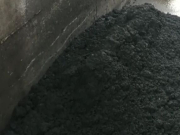
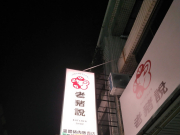
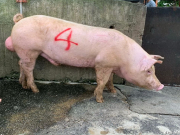
![[轉貼]這個倒霉王國,因為一隻老鼠慘遭滅國 .....](data/attachment/block/3f/3ffb7b6b8ec14613dc077bdd7603e3a5.jpg)
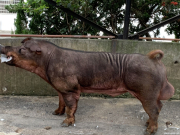
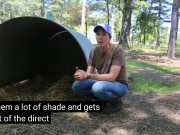



 IP卡
IP卡 狗仔卡
狗仔卡 發表於 2013-10-27 09:47:12
發表於 2013-10-27 09:47:12
 提升卡
提升卡 置頂卡
置頂卡 沉默卡
沉默卡 喧囂卡
喧囂卡 變色卡
變色卡 搶沙發
搶沙發 千斤頂
千斤頂 顯身卡
顯身卡
 樓主
樓主
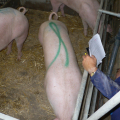
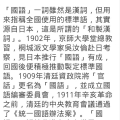
![越南非洲豬瘟疫苗蒙陰影 上百豬隻接種後死亡[轉貼]](data/attachment/block/d2/d2539d8909b33105a4f3e3b9b2e8a659.jpg)
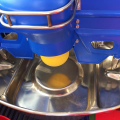
![[轉貼]從上市9頭到14頭 -- 我的養豬專業養成之路。](data/attachment/block/81/819f9b837f86a7e00498f8d95b8b9176.jpg)
